7 clinicians discuss 7 bonding agents
am a general practitioner in a large restorative practice where we feature comprehensive rehabilitation and cosmetic dentistry. Our goal is long-lasting, sensitivity-free restoratives with a focus on esthetics.
These dental professionals share what they like about a range of different products.
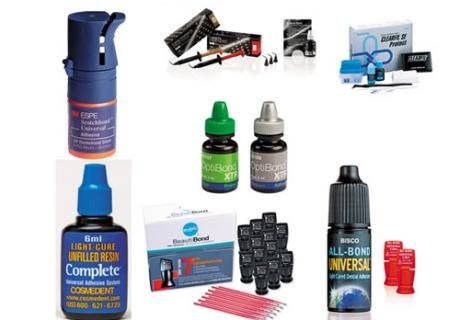
Dental Products Report talked to seven clinicians about seven different bonding agents on the market.
1. All-Bond Universal, BISCO | Jack D. Griffin, Jr., DMD, MAGD
I am a general practitioner in a large restorative practice where we feature comprehensive rehabilitation and cosmetic dentistry. Our goal is BISCO All-Bond Universallong-lasting, sensitivity-free restoratives with a focus on esthetics. Efficiency is very important to me while minimizing materials and keeping techniques simple.
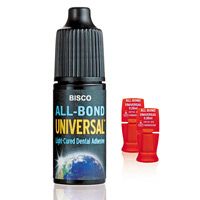
I am lucky to test products for several different groups and teach adhesive, cosmetic and restorative dentistry. All-Bond Universal has become my favorite all-purpose bonding agent.
There are several reasons for using a universal bonding agent. The versatility is unmatched. With the three different bonding techniques, All-Bond Universal is extremely effective. The best long-term bond in dentistry is to etched enamel, but removing the smear layer from dentin requires meticulous attention to detail. Total-etch has proven to be an excellent bonding strategy, but many practitioners experienced sensitivity so non-etch (or self-etch) techniques gained a foothold. There was certainly less sensitivity, but the nonphosphoric acid-etched enamel often resulted in leakage or a stained margin with time. All-Bond Universal works well with either of these techniques.
Very popular in the academic/teaching world today is the third etching strategy: selective-etch. This technique is where phosphoric acid is used only on enamel and the dentin smear layer is left intact and modified by the universal bonding agent. Therefore, we have the benefits of the first two techniques without the issues many saw. All-Bond Universal works very well for any of these three methods whether etching all, some or none of the tooth.
Its simplicity is unsurpassed. Its single bottle, easy application, versatility, low film thickness and clear color are very important in our bonding world today. All-Bond Universal is an excellent choice for whatever your bonding situation is.
2. BeautiBond, Shofu Dental Corp. | Dr. John Comisi
Simplicity is what every dentist wants when doing a direct adhesive procedure. Quicker, faster, better is what we look for in everything that we do. That’s the promise of self-adhesive bonding agents. One bottle, easy to apply and go. However, I also want an adhesive material that I can count on for it’s reliability and long term benefit.
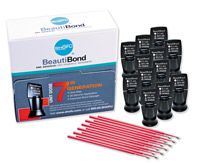
Well, that’s what I find when using BeautiBond. This HEMA-free seventh generation bonding agent, which comes in a convenient unit dose, has a very good initial bond strength comparable to other bonding agents available, a very low film thickness (5 µm) and two unique adhesive monomers to enhance bonding to the complete tooth structure.
The phosphonic acid monomer creates a bond to the enamel surface of the tooth, while the Carboxylic acid monomer is involved with the creation of the bond to the dentin surface. Interestingly, the carboxylic acid is also an MMP inhibitor, which is critical, in my opinion, to reducing dentin bond failure at the hybrid layer.
This is why I call for BeautiBond for all my conventional direct bonding cases. I know that, the MMP inhibition by carboxylic acid will help to maintain a strong hybrid layer bond to dentin and prevent the enzymatic breakdown of the collagen that makes up the dentin structure.
It also is as simple as it can get: open the unidose bottle, insert a micro brush into the reservoir, apply a single layer to the tooth surface and leave it for 10 seconds, gently air dry for three seconds then increase air flow to a higher force level, finally light cure for five seconds, and then apply your composite restorative material.
3. CLEARFIL SE PROTECT, Kuraray Dental | Dr. Joe Willardsen
I kept seeing CLEARFIL SE PROTECT as what most of the research articles compare all the other bonds to. It seemed to be the gold standard so I wanted to try it. As I learned more about it, I saw it has some different proprietary and patented chemicals that none of the other bonding agents have, including the monomer MDPD, which is an anti-bacterial agent that helps the tooth stay bonded longer.
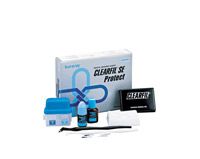
Most bonds break down over five to six years on average, but now we’re seeing they’re staying bonded longer in CLEARFIL SE PROTECT. Some dentists will take a chlorhexidine rinse to block the enzymes releasing from the tooth from breaking it down, but the rinse only lasts so long and doesn’t polymerize with the tooth. MDPD does, and that’s what makes it insoluble. Because of the strength of the bond, my patients aren’t experiencing post-operative sensitivity.
The other thing I like about CLEARFIL is I have the option of using it as a dual-cure. If I have a deep cavity or the tooth has been root canaled, I can mix in the dual-cure activator so I know the CLEARFIL is cured and bonded and don’t have to worry about the light reaching down all the way.
My technique has changed since [CLEARFIL was released]; now that I look back at some of my restorations, I can see a little bit of a gap between the dentin and the composite itself on X-rays. I’m not seeing any evidence of that now with restorations with CLEARFIL. I would definitely have more incidents with sensitivity-not a lot, because I was trying to be very careful, but now I never worry about it.
It helps me be more conservative because it’s more conservative to do a strong bond and rebuild the tooth that way than to crown the tooth. The bottom line is that with CLEARFIL SE PROTECT, I don’t have to crown teeth. Instead, I can bond side to side and front to back and have a stronger tooth than I would if I crowned it. I’m also preventing patients from coming back for more and more work. Eventually when you work on a tooth too much, you end up losing it. By the time you replace a crown two to three times, there’s nothing left to work with. If I bond the tooth and keep its natural structure, I can go in and repair the areas breaking down.
Using CLEARFIL SE PROTECT allows me to be confident and let the patient know it will last a long time and he or she won’t have sensitivity, and patients see the value in that. We’re known as a conservative practice, and patients like that. I always give them a choice between crowns and bonding, and 90 percent of the time, they choose bonding because they see the value.
4. Cosmedent Complete, Cosmedent | Dr. Bud Mopper
I like Cosmedent Complete because it bonds to everything you want to bond to: acrylic, metal, etc. It’s a total-etch technique. I always use total-etch; I don’t believe in self-etching. We have no sensitivity with it at all. I’ve always been a total etcher. I get tremendous results with it. I’ve been using total etching my entire career. I don’t care what bonding agent people use-it doesn’t make a difference-but everyone should have one agent that bonds to everything. There’s no reason to have five or six different ones. The big thing is to follow the instructions, do it the right way and take the time to do it properly. That’s how you get a good restoration. It takes a lot more than the agent itself to do the work well.

There are other agents out there that are very good. I suggest people look for one that bonds to everything.
5. G-aenial Bond, GC America | Dr. Howard Glazer
I’m a big fan of seventh-generation bonding agents because they’re self-etch and self-adhesive bonding agents that eliminate certain steps while still providing certain bond strengths to both enamel and dentin. G-aenial Bond is the improved formulation of G-BOND and provides even stronger bond strengths. However, I don’t use it exclusively. I also use other bonding agents within this category.

I like G-aenial Bond because it is easy to use right out of the bottle. You simply apply it, let it air dry, photo-cure it and go! It’s simple; it takes 30 seconds or less to apply. In terms of value, it brings high bond strengths to both enamel and dentin, and I place more value on its adhesion to enamel because most adhesion comes from the enamel.
G-aenial Flo and Universal Flo are also excellent flowable resins. I prefer to stay in the same system so if I use that flowable then I’ll use the matching bonding agent. You can mix and match, but I prefer to use products that were designed to work together.
Another plus is that it is available in unit doses as well as bottles. I prefer to use the unit dose because there’s no cross contamination possible and I’m not at risk of having the solvent evaporate if I forget to cap the bottle.
I’ve been using it since it was introduced, so for about two to three years.
I really don’t have a good answer for using several different bonding agents. You could say it comes down to the flavor of the day. There are advantages to each one depending on the indication of the tooth I’m restoring, but I would rate all three highly.
None of the three have failed me. It’s really simple; you can’t elaborate on it because it’s just easy. G-aenial Bond is a very good product, but there are several good products on the market right now. I worry about people who use one thing exclusively. Either they’ve got blinders on or they’ve invented it.
I like G-aenial Bond because GC America has an excellent flowable resin, and I’ll stay in-system often so if I’m using that flowable, I’m using the matching bonding agent. You can mix and match, but I don’t like to do so.
6. OptiBond XTR, Kerr | Dr. Greg Gillespie
I like OptiBond XTR because I can use it with any clinical situation I want without compromising my bond strengths or giving up quality in certain areas. Regardless of how or what clinical situation I use the product in, I’m very confident with the strength of the bond because I’m getting a proper etch on both enamel and dentin, which is very important in long-term stability.
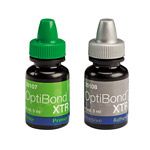
The gold standard in bonding is the fourth-generation system (a three-step etch-and-rinse system) in which you have a separate bottle for your phosphoric acid etch, primer and adhesive. Each step does something different, and it does it well. However, it’s also technique-sensitive, and I was looking for something a little more simple, but combining the primer and adhesive into one bottle means compromising somewhere.
Long-term studies have shown the strength of the bond with an all-in-one bottle is not what you can get when you’re using a two-bottle system where the primer and adhesive are separated. It’s like using a two-in-one shampoo and conditioner, which works but not to the same degree. Ask anyone with a significant amount of hair, and they’ll always agree: Two-bottle shampoo and conditioner always works better. When you separate them, you have better chemistry, and when you have better chemistry, you have better bonds.
Before OptiBond XTR came out, I had primarily used other etch-and-rinse systems. I learned about the chemistry of XTR from the chemist who developed the product and found the initial studies looked very promising. Between using OptiBond SoloPlus, DENTSPLY’s Prime and Bond NT and Kuraray’s CLEARFIL SE, which were all good products, I found I could substitute all of them for both direct and indirect indications with one product in Optibond XTR.
Instead of choosing between Optibond Solo Plus for procedures in which I was etching and CLEARFIL SE for those that didn’t require enamel etching, I can do either one with XTR. Since switching to XTR about four years ago, I have seen virtually no failures. My margins aren’t leaking, crowns aren’t coming off and post-operative sensitivity is very rare.
It’s also great for my inventory and cost. I just reach for one bonding product for every procedure regardless of the situation.
7. 3M™ ESPE™ Scotchbond™ Universal Adhesive, 3M ESPE Dental | Dr. Jeff Blank
The concept of a truly “universal” adhesive is predicated on its ability to be used in all three modes of dental adhesion; total-etch, selective-etch and self-etch. Prior to the introduction of Scotchbond Universal Adhesive, clinicians like myself had to research, stock and utilize a sundry of highly rated adhesives appropriate for each mode of adhesion. Naturally, each adhesive utilized different application protocols and often required the use of proprietary resin cements of the same brand when used for indirect cementation applications. This increased the potential for operator error, and some clinicians found the cost of maintaining the significant inventory of products prohibitive.
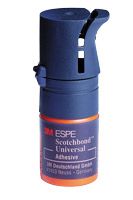
What I like about Scotchbond Universal Adhesive is that it is a well-researched, highly rated product that can be used in all three modes of adhesion using same the application technique. This is true for both indirect and direct applications and not only eliminates the need to stock multiple adhesives but also significantly decreases the potential for operator error. Three years after release, I have not come across any product that’s been able to overshadow what it can do. I have yet to see a research study in which the product didn’t perform well-even in comparative studies conducted by competitors. That speaks volumes for the integrity of the product and 3M ESPE Dental.
I’ve always gravitated toward companies that do a lot of research and take the time to release the products, showing they don’t count on emotional sales for products, and 3M has a history of researching things before releasing them. After reviewing the research, I felt it was compelling enough to introduce it into the practice, but I didn’t let go of everything else immediately. However, within a year, I had abandoned every other adhesive. What makes it unique is that the cements have a co-catalyst so you don’t have to cure the adhesive first, which was different from a lot of the products I used at the time. I’ve always trusted 3M ESPE Dental’s cements, and now I use them exclusively.
In addition to the expense associated with having an entire inventory of adhesives and cements, you have to consider the frequency of using those products. I reached the point where I don’t have anything else in my office so Scotchbond Universal Adhesive has actually lived up to its billing.